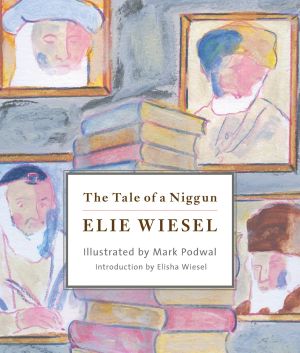The Tale of a Niggun

- Authors
- Mark Podwal & Elisha Wiesel & Wiesel, Elie
- Publisher
- Schocken Books Inc
- Tags
- poetry , history , religion
- Date
- 2020-11-17T00:00:00+00:00
- Size
- 9.56 MB
- Lang
- en
*Based on an actual event that occurred during World War II, this heartbreaking narrative poem about history, immortality, and the power of song is accompanied by magnificent full-color paintings by award-winning artist Mark Podwal.*
It is the evening before the holiday of Purim, and the Nazis have given the ghetto's leaders twenty-four hours to turn over ten Jews to be hung to "avenge" the deaths of the ten sons of Haman, the villain of the Purim story, which celebrates the triumph of the Jews of Persia over potential genocide some 2,400 years ago. If the leaders refuse, the entire ghetto will be liquidated. Terrified, they go to the ghetto's rabbi for advice; he tells them to return the next morning. Over the course of the night the rabbi calls up the spirits of rabbis from centuries past, but no one can give him a satisfactory answer; they've never encountered anything like this. The eighteenth century mystic and founder of Hasidism, the Ba'al Shem Tov, tries to intercede with God by singing a niggun, a wordless, joyful melody with the power to break the chains of evil, but his efforts end in failure. Heartbroken, the Ba'al Shem Tov teaches the niggun to the ghetto's rabbi, and vanishes. That evening, everyone in the ghetto is herded into the synagogue courtyard. When no one steps forward, they are informed that in an hour they will all be killed. How does one prepare to die? The question is laid before the ghetto rabbi, and he teaches his assembled community the song that the Ba'al Shem Tov taught him the night before. As their voices soar upward, they are joined by those of Jews from centuries past from all over the world, all singing the Ba'al Shem Tov's niggun as the massacre begins. And as the souls of these men, women, and children rise to the heavens, their song continues, uninterrupted, to the end of time and beyond.
With an introduction by Elisha Wiesel